Abstract
Four pigeons were exposed to multiple schedules and later to concurrent-chains schedules, with terminal links that had previously been multiple-schedule components. For 2 birds, the terminal-link schedules arranged an inverse relationship between response rate and reinforcement rate; for the other 2 birds a direct corresponding relationship was arranged. Those response rates were further modified by differentially reinforcing either longer or shorter interresponse times, relative to the current means. Although the birds' initial-link responses indicated preferences for terminal links with higher rates of reinforcement, in half the cases the birds responded during the terminal links in such a way as to produce lower rates of reinforcement, rates their initial-link behavior indicated they did not prefer. That outcome is inconsistent with maximization theory, but consistent with a strengthening analysis of behavior on single-key schedules.
Keywords: maximization, multiple schedules, concurrent chains, interresponse times, key peck, pigeon
Full text
PDF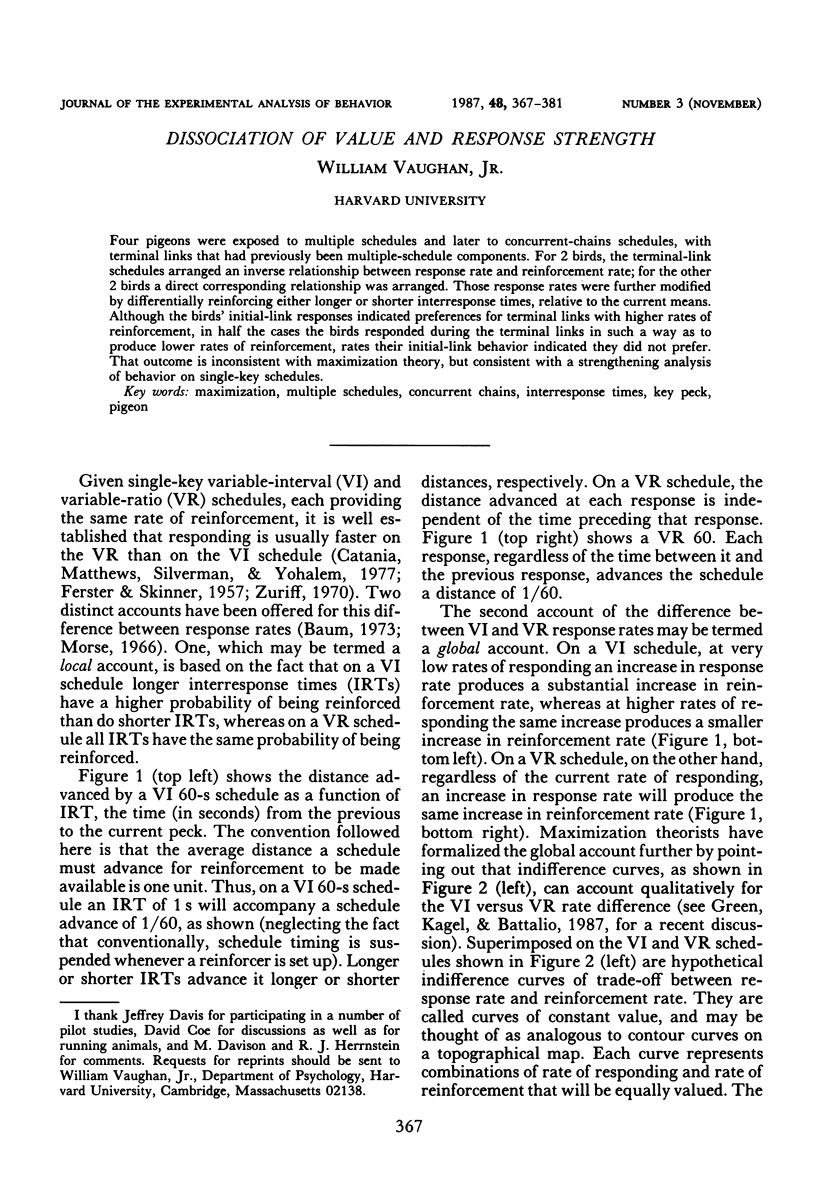
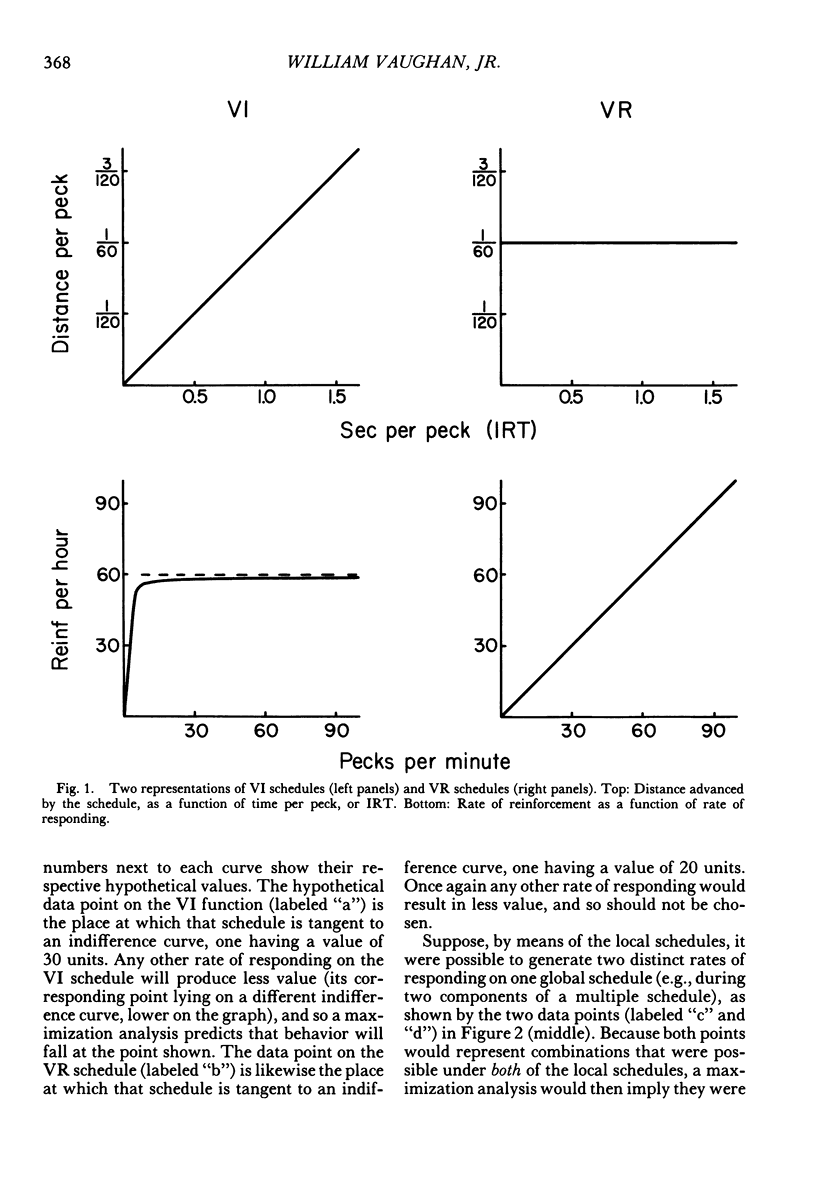
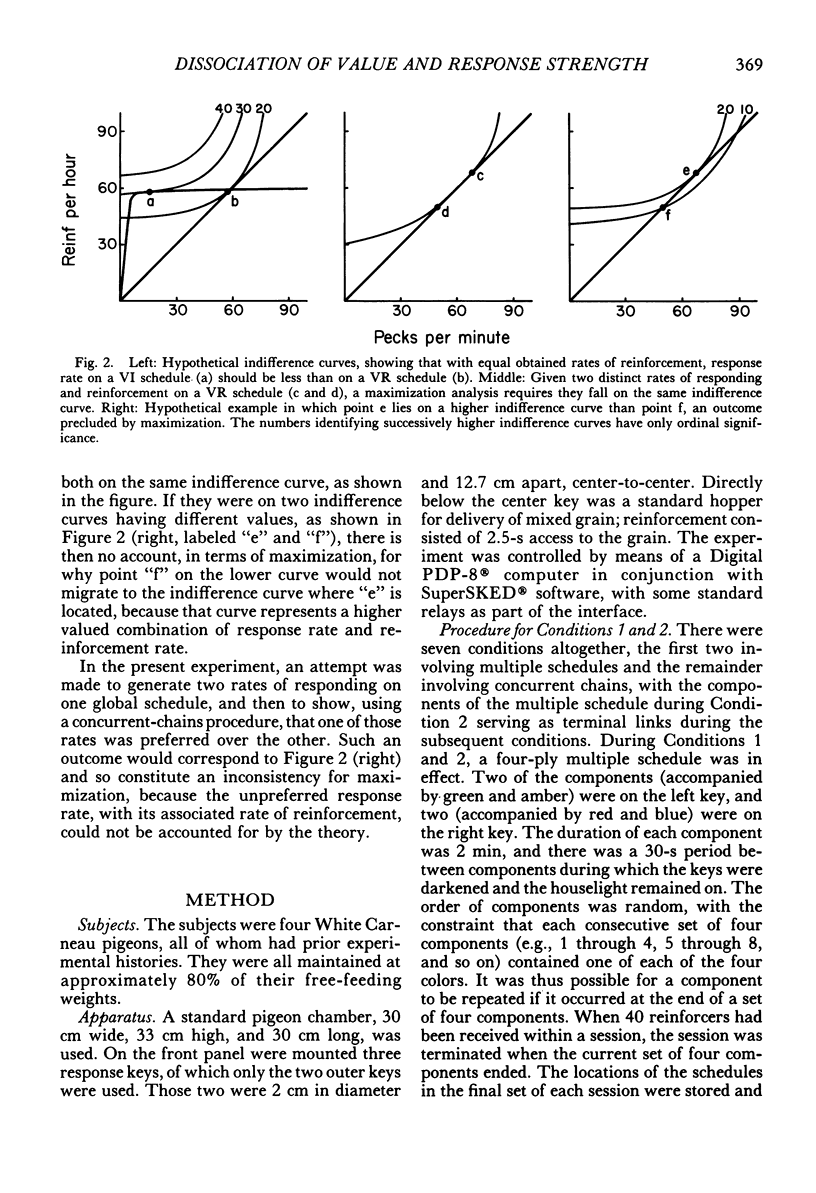
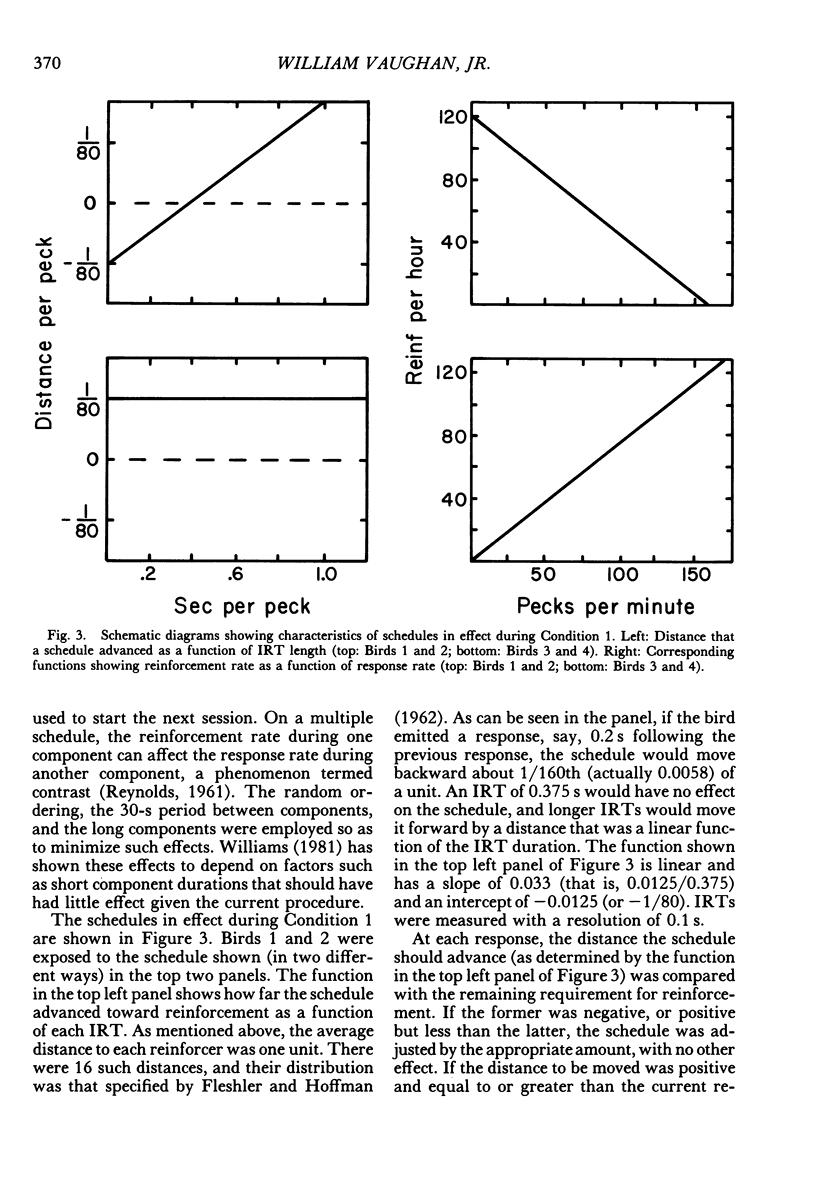

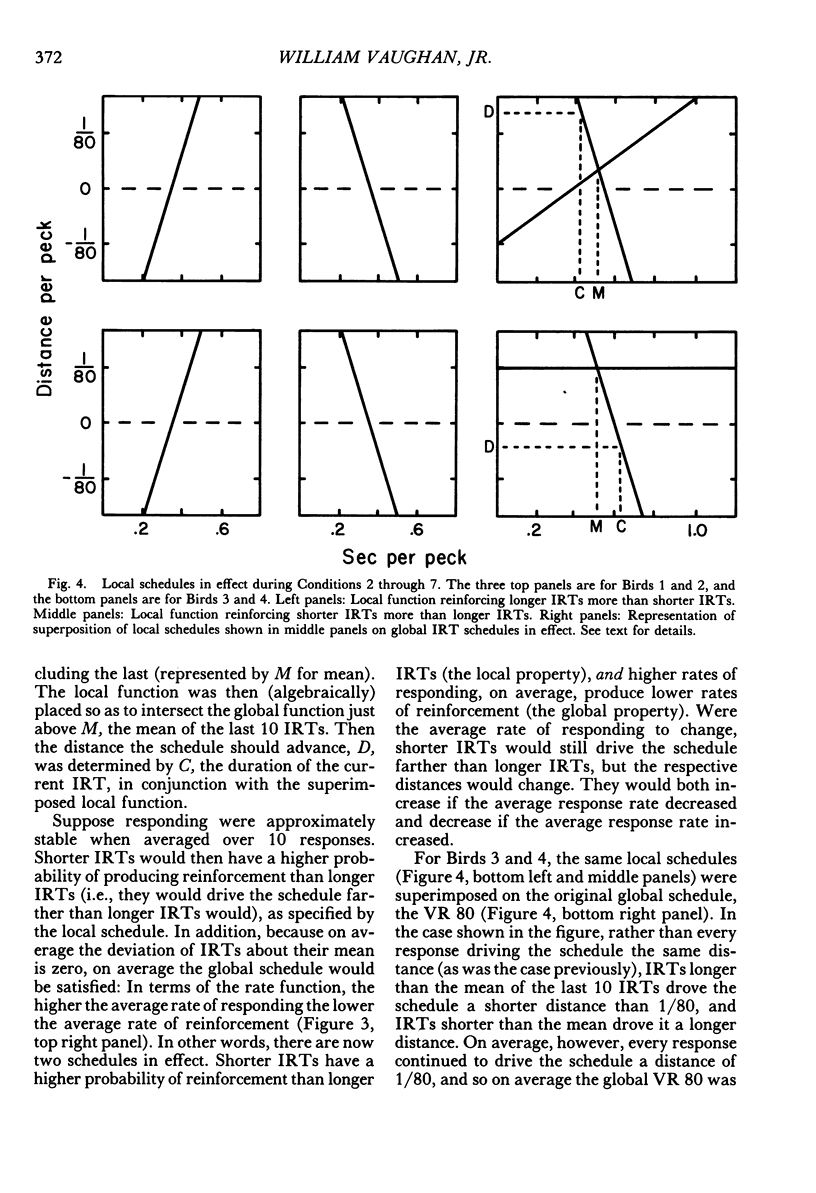
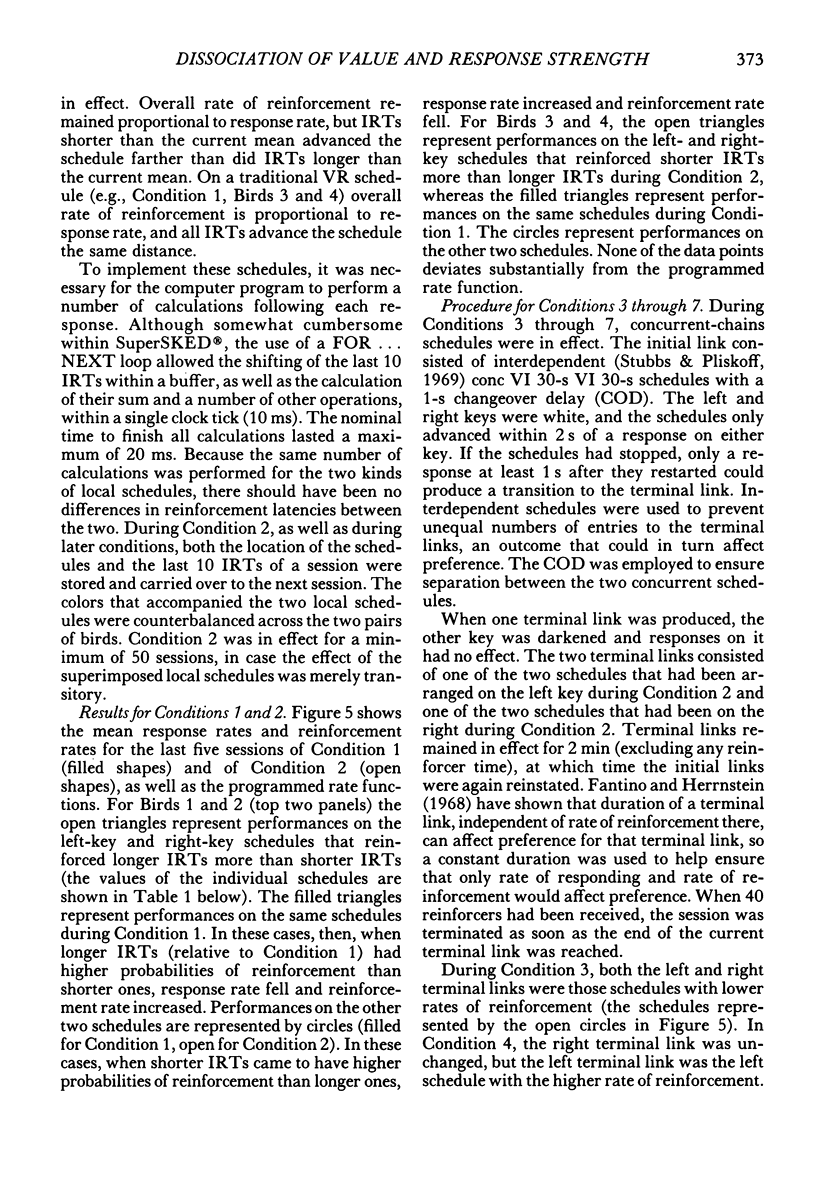


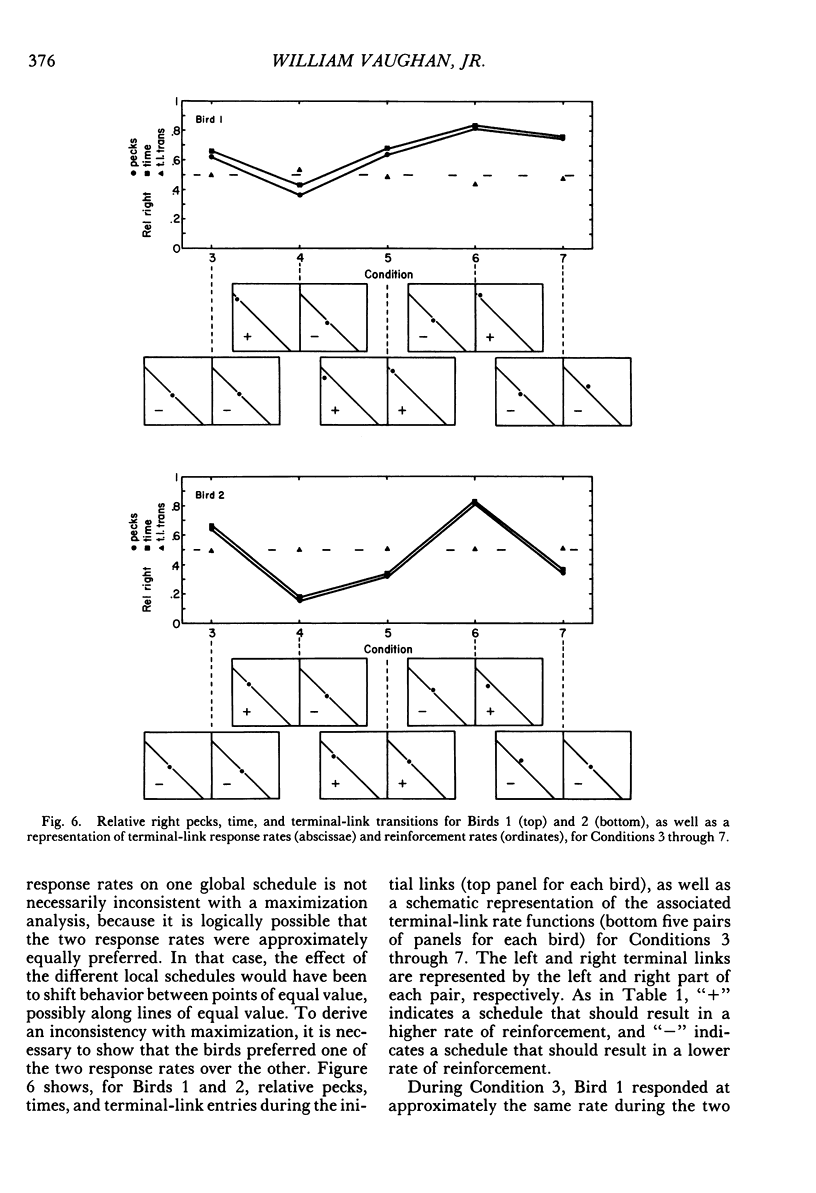
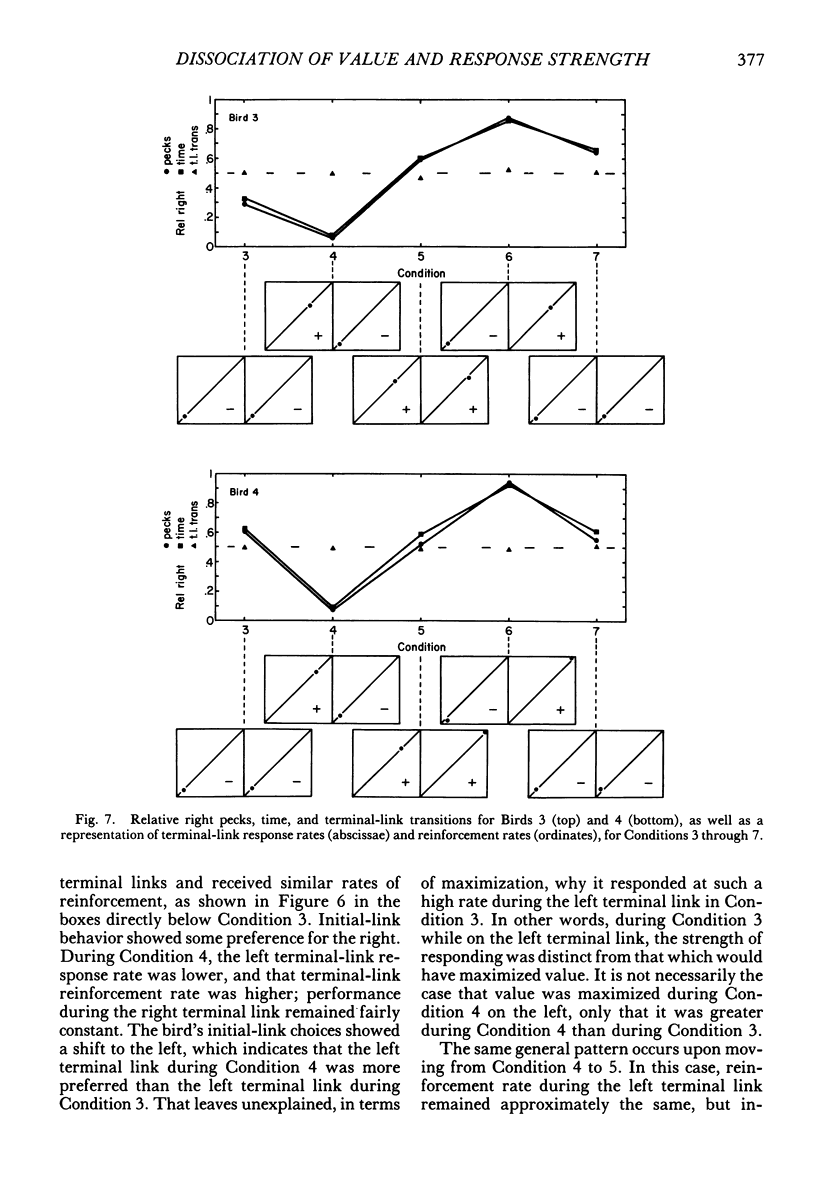
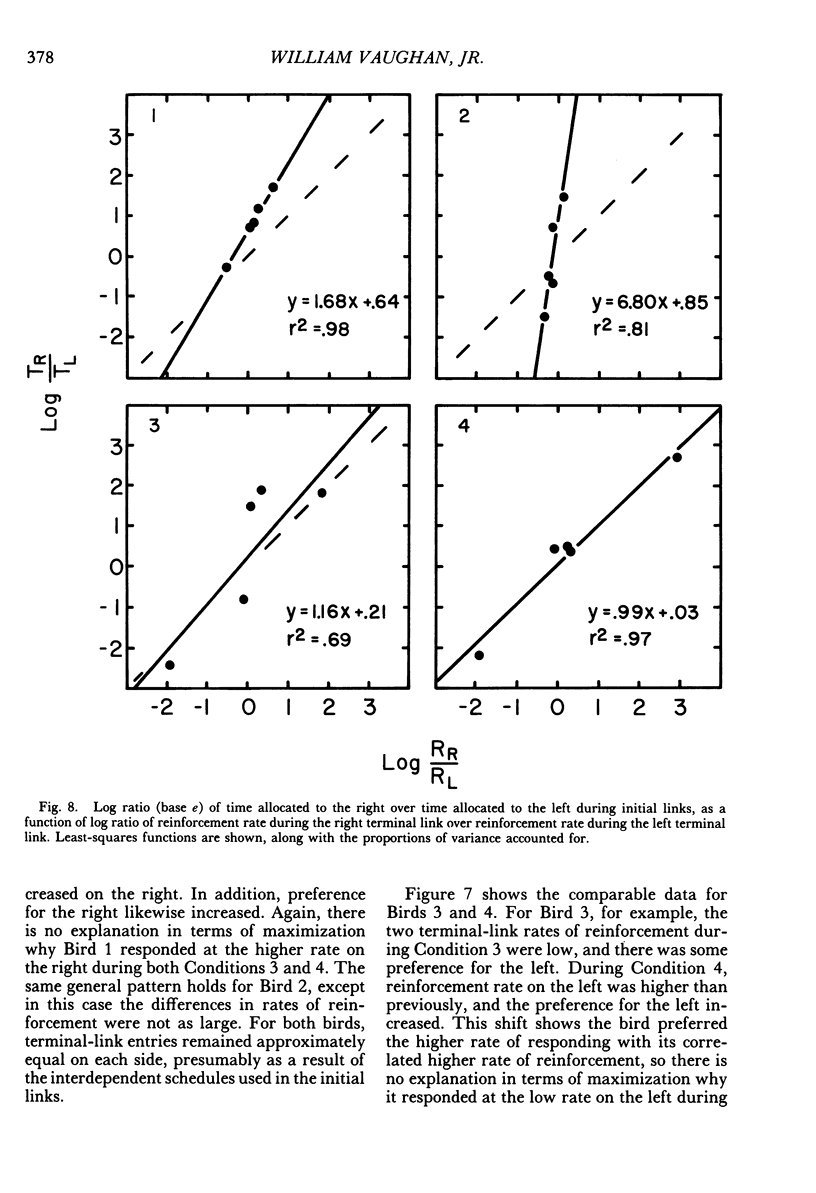
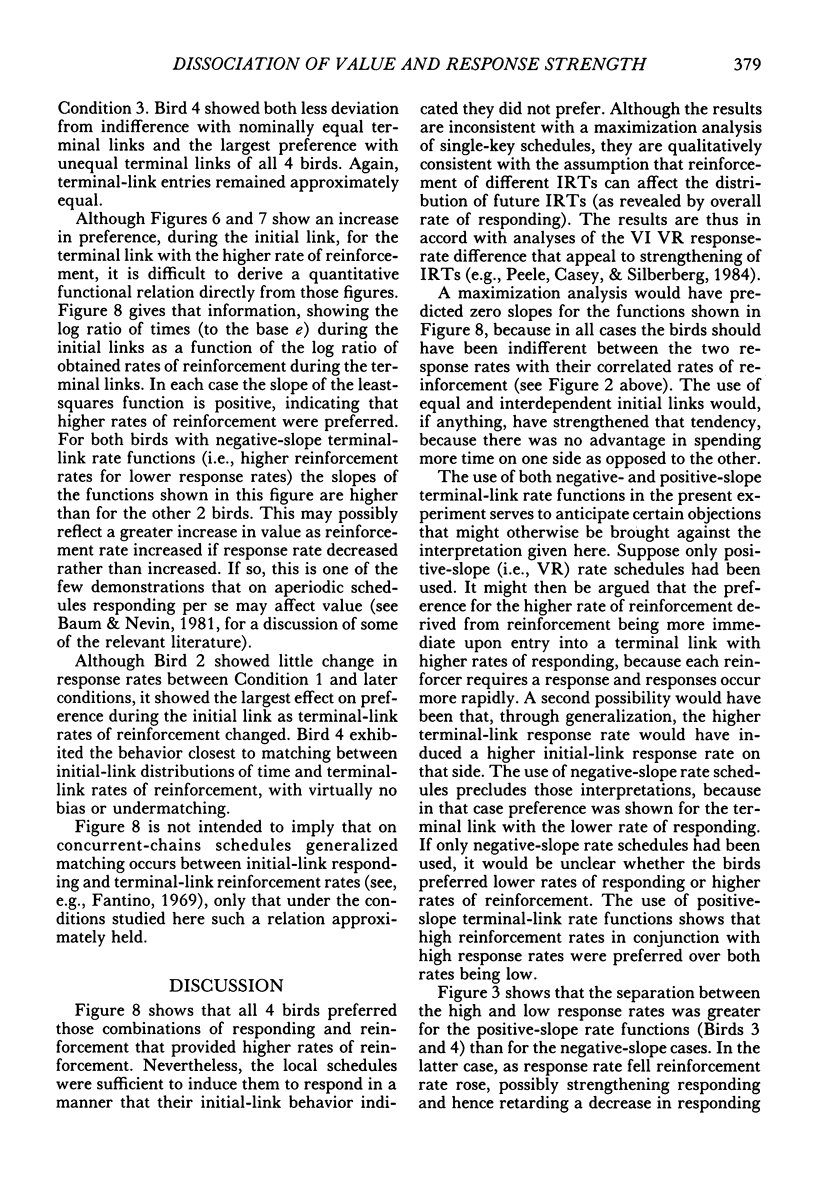
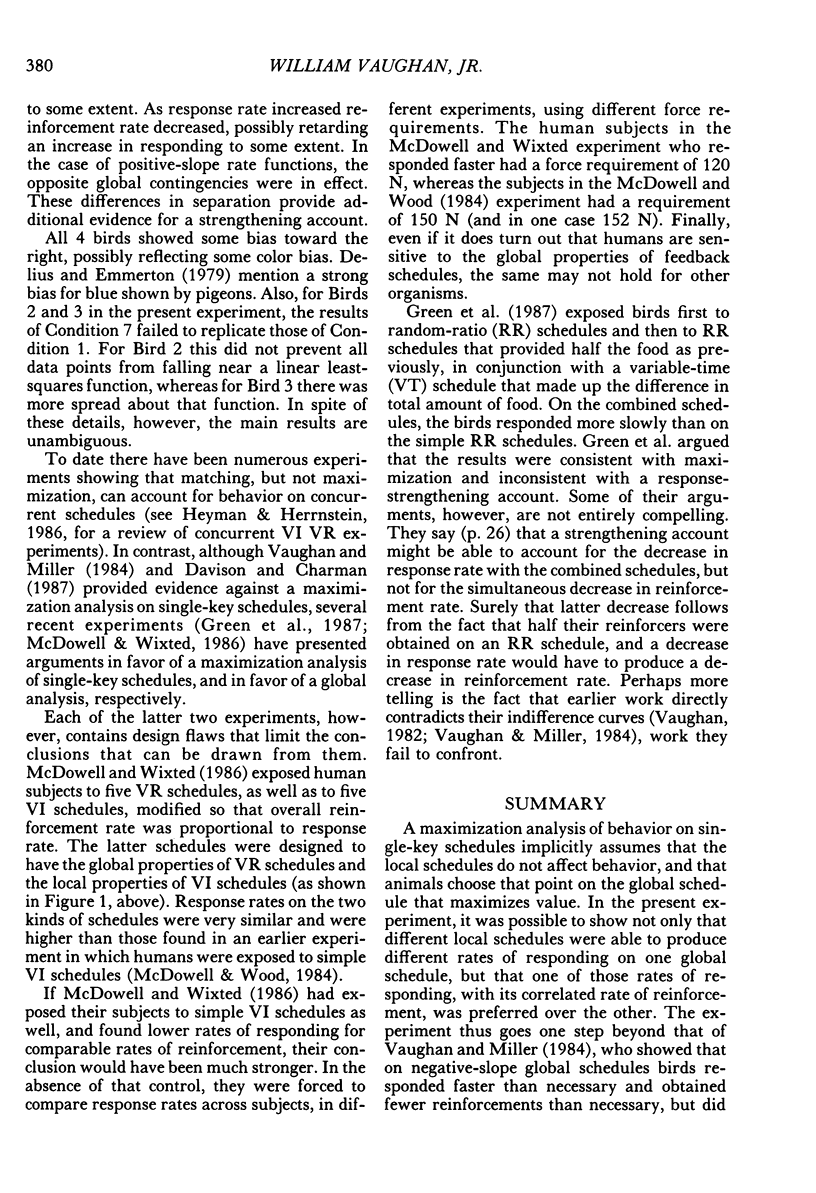
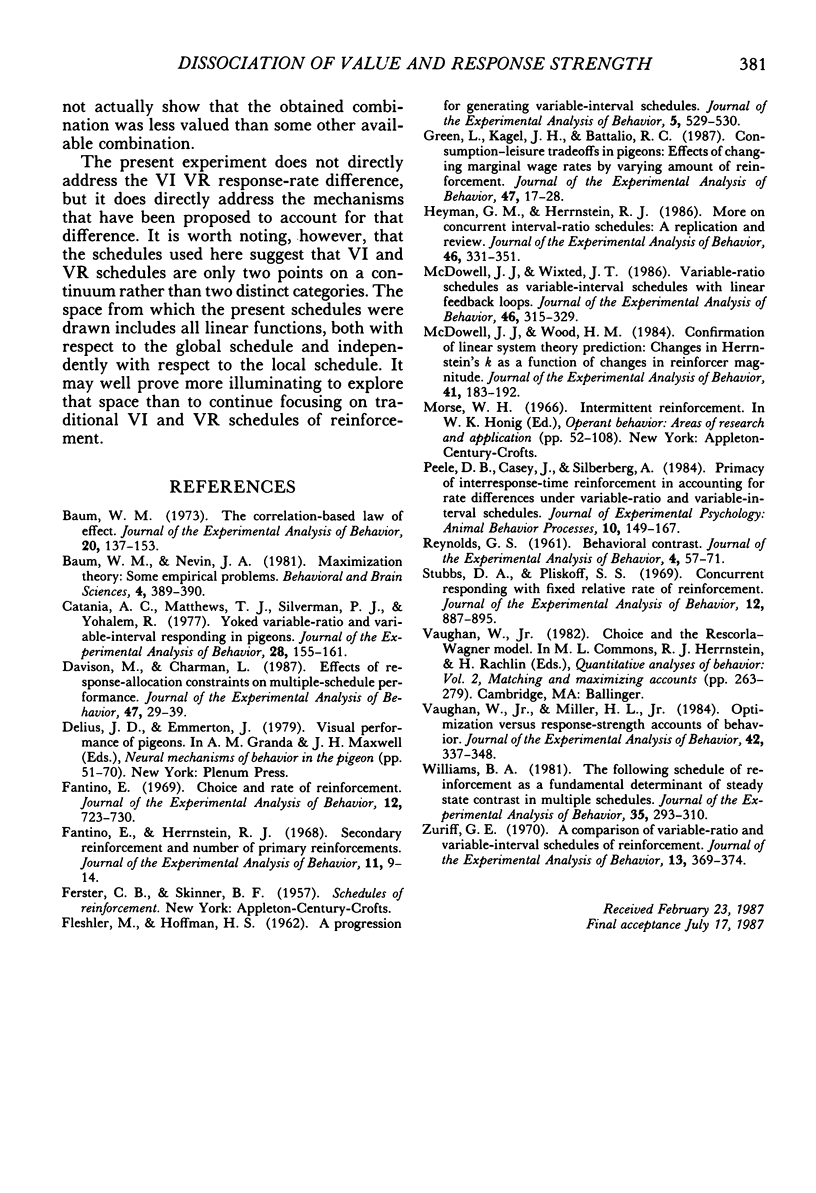
Selected References
These references are in PubMed. This may not be the complete list of references from this article.
- Baum W. M. The correlation-based law of effect. J Exp Anal Behav. 1973 Jul;20(1):137–153. doi: 10.1901/jeab.1973.20-137. [DOI] [PMC free article] [PubMed] [Google Scholar]
- Catania A. C., Matthews T. J., Silverman P. J., Yohalem R. Yoked variable-ratio and variable-interval responding in pigeons. J Exp Anal Behav. 1977 Sep;28(2):155–161. doi: 10.1901/jeab.1977.28-155. [DOI] [PMC free article] [PubMed] [Google Scholar]
- Davison M., Charman L. Effects of response-allocation constraints on multiple-schedule performance. J Exp Anal Behav. 1987 Jan;47(1):29–39. doi: 10.1901/jeab.1987.47-29. [DOI] [PMC free article] [PubMed] [Google Scholar]
- FLESHLER M., HOFFMAN H. S. A progression for generating variable-interval schedules. J Exp Anal Behav. 1962 Oct;5:529–530. doi: 10.1901/jeab.1962.5-529. [DOI] [PMC free article] [PubMed] [Google Scholar]
- Fantino E. Choice and rate of reinforcement. J Exp Anal Behav. 1969 Sep;12(5):723–730. doi: 10.1901/jeab.1969.12-723. [DOI] [PMC free article] [PubMed] [Google Scholar]
- Fantino E., Herrnstein R. J. Secondary reinforcement and number of primary reinforcements. J Exp Anal Behav. 1968 Jan;11(1):9–14. doi: 10.1901/jeab.1968.11-9. [DOI] [PMC free article] [PubMed] [Google Scholar]
- Green L., Kagel J. H., Battalio R. C. Consumption-leisure tradeoffs in pigeons: Effects of changing marginal wage rates by varying amount of reinforcement. J Exp Anal Behav. 1987 Jan;47(1):17–28. doi: 10.1901/jeab.1987.47-17. [DOI] [PMC free article] [PubMed] [Google Scholar]
- Heyman G. M., Herrnstein R. J. More on concurrent interval-ratio schedules: a replication and review. J Exp Anal Behav. 1986 Nov;46(3):331–351. doi: 10.1901/jeab.1986.46-331. [DOI] [PMC free article] [PubMed] [Google Scholar]
- McDowell J. J., Wixted J. T. Variable-ratio schedules as variable-interval schedules with linear feedback loops. J Exp Anal Behav. 1986 Nov;46(3):315–329. doi: 10.1901/jeab.1986.46-315. [DOI] [PMC free article] [PubMed] [Google Scholar]
- McDowell J. J., Wood H. M. Confirmation of linear system theory prediction: Changes in Herrnstein's k as a function of changes in reinforcer magnitude. J Exp Anal Behav. 1984 Mar;41(2):183–192. doi: 10.1901/jeab.1984.41-183. [DOI] [PMC free article] [PubMed] [Google Scholar]
- REYNOLDS G. S. Behavioral contrast. J Exp Anal Behav. 1961 Jan;4:57–71. doi: 10.1901/jeab.1961.4-57. [DOI] [PMC free article] [PubMed] [Google Scholar]
- Stubbs D. A., Pliskoff S. S. Concurrent responding with fixed relative rate of reinforcement. J Exp Anal Behav. 1969 Nov;12(6):887–895. doi: 10.1901/jeab.1969.12-887. [DOI] [PMC free article] [PubMed] [Google Scholar]
- Vaughan W., Jr, Miller H. L., Jr Optimization versus response-strength accounts of behavior. J Exp Anal Behav. 1984 Sep;42(2):337–348. doi: 10.1901/jeab.1984.42-337. [DOI] [PMC free article] [PubMed] [Google Scholar]
- Williams B. A. The following schedule of reinforcement as a fundamental determinant of steady state contrast in multiple schedules. J Exp Anal Behav. 1981 May;35(3):293–310. doi: 10.1901/jeab.1981.35-293. [DOI] [PMC free article] [PubMed] [Google Scholar]
- Zuriff G. E. A comparison of variable-ratio and variable-interval schedules of reinforcement. J Exp Anal Behav. 1970 May;13(3):369–374. doi: 10.1901/jeab.1970.13-369. [DOI] [PMC free article] [PubMed] [Google Scholar]


